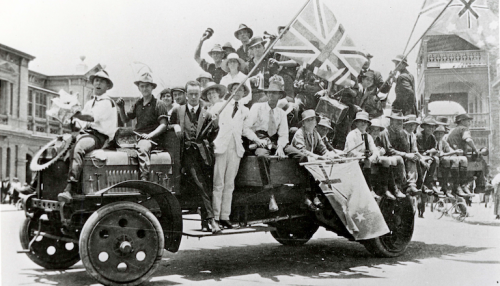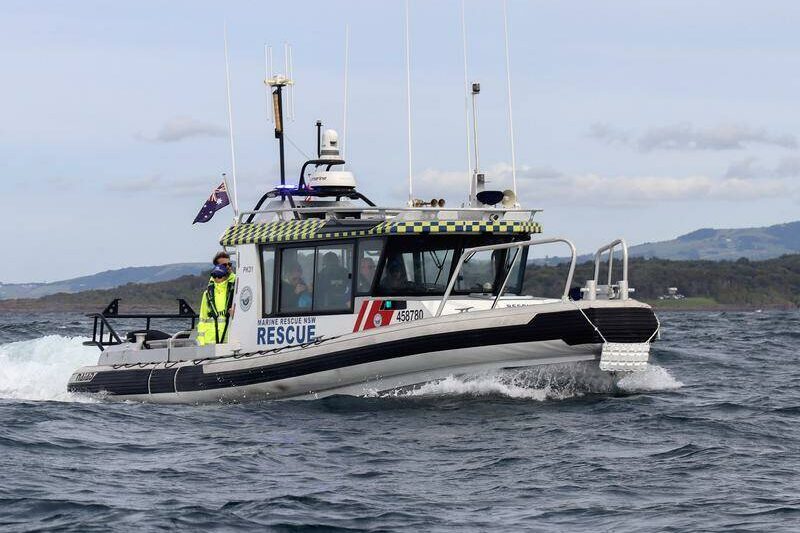
The objective was to capture Constantinople (now Istanbul in Turkey), the capital of the Ottoman Empire, and an ally of Germany.
The Anzacs landed on Gallipoli and met fierce resistance from the Ottoman Turkish defenders. Their plan to knock Turkey out of the war quickly became a stalemate, and the campaign dragged on for eight months.
At the end of 1915, the allied forces were evacuated. Both sides suffered heavy casualties and endured great hardships. More than 8000 Australian soldiers were killed.
Although the Gallipoli campaign failed in its military objectives, the Australian and NZ actions during the campaign left a powerful legacy for Australians and April 25 became the day that commemorates the spirit and sacrifice of the Anzacs and all Australians who served and were killed in military operations.
This year marks the centenary of that fateful landing on Gallipoli and will see record numbers of people participating in and showing their respects at dawn services, marches and ceremonies across Australia.
The Australian War Memorial’s events are expected to be the largest held at the memorial and a focal point for the nation’s Anzac Day commemorations.
On Anzac Day, the War Memorial, in close co-operation with the Returned and Services League of Australia ACT, will host the Dawn Service – the time of the original landing in Gallipoli – at 5.30am, the National Ceremony featuring a march of past veterans at 10.15am and the Last Post Ceremony at 4.30pm.
The Aboriginal and Torres Strait Islander Commemorative Ceremony will be held after the Dawn Service at 6.30am at the Aboriginal Memorial plaque on the side of Mount Ainslie.
Owing to the increased demand, all reserved seats for the National Ceremony have been allocated, but the War Memorial encourages people to arrive early and attend the ceremony by watching from outside the reserved seating or on one of the six large screens that will be located in the memorial grounds.
Roll of Honour name projections will be on display all morning and readings drawn from the letters and diaries of Australian servicemen and servicewomen will start at 4.25am.
Road closures will be in place from 3.30am until 1pm on Saturday, April 25. This will affect traffic flow around Treloar Crescent, Limestone Avenue, and Anzac Parade.
The public is encouraged to use available shuttle services and public transport. There will be parking on-site for mobility-impaired visitors with vehicles displaying a government-issued parking pass.
Shuttle services will be available for the Dawn Service and the National Ceremony, leaving from Majura Park Shopping Centre (free), Russell Offices (free), and Canberra Centre ($2).
The Dawn Service from Anzac Cove in Gallipoli will be broadcast live on the large screens located in the Sculpture Garden and the Western Lawn at 12.30pm. The broadcast will cross at 1.30pm to the commemorations at the memorial in Villers-Bretonneux, France.
Limited seating is available, and will be filled on a first-come, first-served basis. There is plenty of space and members of the public are welcome to bring their own chairs to view the service.
Rosemary is traditionally worn on Anzac Day, and has particular significance for Australians as it is found growing wild on the Gallipoli peninsula.

Canberra’s cultural icons have contributed the following exhibitions in recognition of the Centenary:
Australian Portrait Gallery
Exhibition – “All that fall: Sacrifice, life and loss in the First World War”
Focusing on the wide-ranging theme of loss and absence, “All that fall: Sacrifice, life and loss in the First World War” provides a moving portrait of loss on the Australian home front. Powerful symbolic images, including contemporary works, evoke the emotional intensity of loss.
Museum of Australian Democracy, Old Parliament House
Exhibition – “Crisis 1914! The call to arms”
“Crisis 1914! The call to arms” explores the political events that led to Australia’s involvement in World War I, from outbreak of war in the August to the first convoy’s departure in November, 1914. See the original Cabinet table used in 1914, along with other memorabilia from the era that helps to tell the story of Australia’s political journey.
National Library of Australia
“Keepsakes” explores the diaries, photographs, letters and mementos kept and treasured as reminders of the Great War. Sourced entirely from the National Library of Australia’s collections, this exhibition highlights the private experience of war and the objects that evoke our memories.
National Museum of Australia
Exhibition – “The Home Front: Australia during the First World War”
Through the themes of pride, sorrow, joy, passion and wonder, this newly opened exhibition shares the diverse experiences of 23 Australians and explores the effect of the war on them, their families and their communities. From Prime Minister Billy Hughes’ determination to impose conscription on a divided nation, to Basil Watson’s thrilling but ultimately tragic aerobatic displays in his homemade biplane, the exhibition highlights painful and inspiring stories.
National War Memorial
Exhibition – “Australia in the Great War”
“Australia in the Great War” is the Australian War Memorial’s new exhibition in the World War I galleries. The galleries integrate a wide variety of items from this collection, including dioramas, artworks, uniforms, medals, technology such as artillery and firearms, photographs, film, letters and diaries.
Anzac Day events across Canberra
5.30am Dawn Service
Parade Ground, Australian War Memorial
6.30am Aboriginal and Torres Strait Islander Commemorative Service
Aboriginal Memorial plaque on the side of Mount Ainslie,
Australian War Memorial
6.45am Morning Service, Presbyterian Church of St Andrew, Forrest
7.45am Morning Mass, St Christopher’s Cathedral, Manuka
8am Morning Service, Woden RSL sub-branch, Yamba Sports Club, Phillip
10.15am National Ceremony, Parade Ground, Australian War Memorial
12pm 2-Up games begin at Canberra Labor Club with donations collected for Legacy
1pm Major shopping centres commence trading until 5pm
4.45pm Last Post Ceremony, Australian War Memorial
5.40pm AFL Premiership Season, Giants Vs Gold Coast Suns
Manuka Oval
Who can be trusted?
In a world of spin and confusion, there’s never been a more important time to support independent journalism in Canberra.
If you trust our work online and want to enforce the power of independent voices, I invite you to make a small contribution.
Every dollar of support is invested back into our journalism to help keep citynews.com.au strong and free.
Thank you,
Ian Meikle, editor



![Canberra’s woodchopping association – the Hall and District Axemen’s Club – is rebranding to Capital Country Woodchopping.
“We didn’t want to be exclusively a Canberra association and we deliberately left any gender-specific wording out in the new name,” says president Cheyanne Girvan, 32.
“We also went a different [way] to other associations under NSW by not including ‘association’ in our name.”
Four years ago the Hall and District Axemen’s club’s membership was 25.
Cheyanne says this name change will give the club the versatility to grow into other areas and on to greater things.
To read on about Cheyanne's story with the woodchoppers, visit our website at citynews.com.au or click the link in our bio!
@@capitalcountrywoodchopping
#woodchopping #woodchoppinggirl #woodchoppingaustralia #axemen #axewomen #woodcutter #canberrastories #storiesthatmatter #citynews #journalism](https://citynews.com.au/wp-content/plugins/instagram-feed/img/placeholder.png)
Leave a Reply